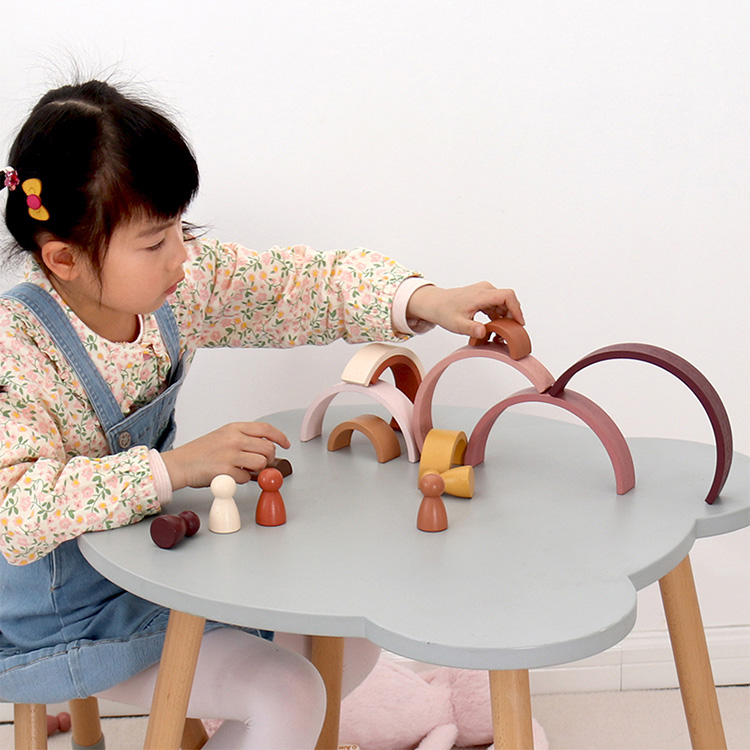Characteristics and examples of Montessori stacking toys
2024-01-31
Montessori stacking toys are designed to promote a child's development of fine motor skills, hand-eye coordination, and concentration. These toys often follow Montessori principles, emphasizing simplicity, natural materials, and open-ended play. Here are some characteristics and examples of Montessori stacking toys:
1. Simple Design:
- Montessori stacking toys typically have a straightforward design with minimalistic features. The focus is on the child's exploration and creativity.
2. Natural Materials:
- Many Montessori toys are made from natural materials such as wood. These materials are durable, eco-friendly, and provide a tactile experience for the child.
3. Gradual Complexity:
- Stacking toys often come in sets with pieces of varying sizes. This allows children to start with basic stacking and progress to more complex arrangements as they develop their skills.
4. No Lights or Sounds:
- Montessori toys avoid electronic components, lights, or sounds. The emphasis is on the child's engagement with the physical aspects of the toy rather than passive interaction.
5. Open-ended Play:
- Stacking toys in the Montessori philosophy are open-ended, meaning there are no specific rules or predetermined ways to play. Children are encouraged to explore and use their imagination.
6. Educational Value:
- Stacking toys help children understand concepts like size, shape, balance, and spatial relationships. As they stack and unstack, they also refine their motor skills.
7. Neutral Colors:
- Montessori toys often use neutral colors. This simplicity is intentional, allowing the child to focus on the sensory experience and creative aspects of play.
8. Safety and Durability:
- Montessori toys prioritize safety and durability. Stacking toys are designed to withstand the wear and tear of play while ensuring the child's safety.
Examples of Montessori stacking toys may include sets of wooden blocks, rings, or discs that can be stacked in different ways. Some stacking toys may also incorporate additional elements like pegs or connectors, providing opportunities for creative exploration.
When choosing a Montessori stacking toy, consider the child's age, developmental stage, and individual interests. The goal is to provide a toy that engages the child's senses, encourages independent play, and fosters a love for learning through hands-on exploration.



